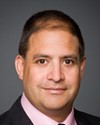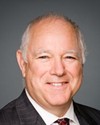Different provinces have different methods to monitor the adherence to provincial standards at various facilities. In Ontario, for example, through the Ministry of Health and Long-Term Care, they send out teams of five or six people who go into a facility unannounced and assess all sorts of different elements of that facility, everything from personal care to hygiene, to infectious disease control, to finances, and they assess the facility against provincial standards. The results of that assessment in Ontario, for example, are posted publicly on their website. They list the facilities, the standards that they've met, and the standards they have not met.
What we do is have people who are dedicated in each of our regions. Part of their work involves going in and looking at the various compliance reports—and they vary across the country—with respect to facilities where veterans live. If they identify that X facility has in fact become non-compliant to three key standards, then we would be notified and would have some of our staff go out and undertake a review of sorts with that facility, to ascertain the impacts on veterans.





